If you are fond of coffee, the large number of types of Vietnamese coffee will make your wildest dream come true! They are extremely diverse in both taste and presentation, so you will have plenty of options to espresso yourself!
Even people who dislike the signature bitterness of coffee will fall in love with sweet and creamy coffee-based drinks from this country. Don’t believe me? Scroll down to see for yourself! You may even pick a few interesting facts about Vietnamese coffee along the way.
The Story Of Vietnamese Coffee: A Bitter Beginning, A Sweet Ending
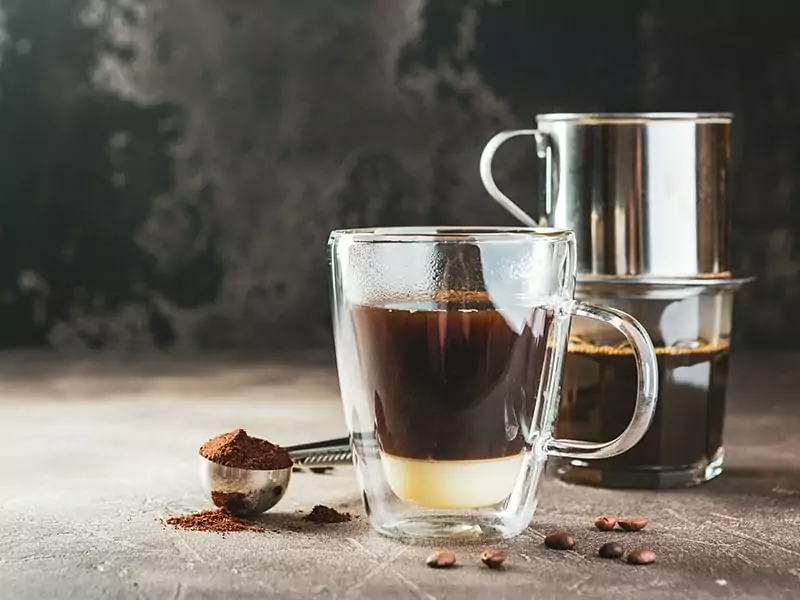
By most accounts, coffee beans were brought to Vietnam for the first time in 1857 by French Catholic priests. There might have been attempts to bring coffee to the country earlier, but they had probably failed and gone unrecorded.
However, local coffee cultivation only began in earnest after the French conquests of Vietnam were complete in the 1880s. The first coffee plantations were set up in Northern Vietnam and met with failure due to unsuitable weather and soil conditions.
A few decades later, the colonial government chose the Central Highlands as the site for new coffee plantations. This time, everything went smooth sailing. Coffee production consistently climbed up, while Vietnamese people showed a growing appetite for this drink.
After the post-Vietnam War hardships, the coffee industry in Vietnam experienced exponential growth, turning this country into one of the world’s leading coffee producers. In turn, coffee became more and more important to Vietnamese daily life.
A Quick Look At Vietnamese Coffee Culture
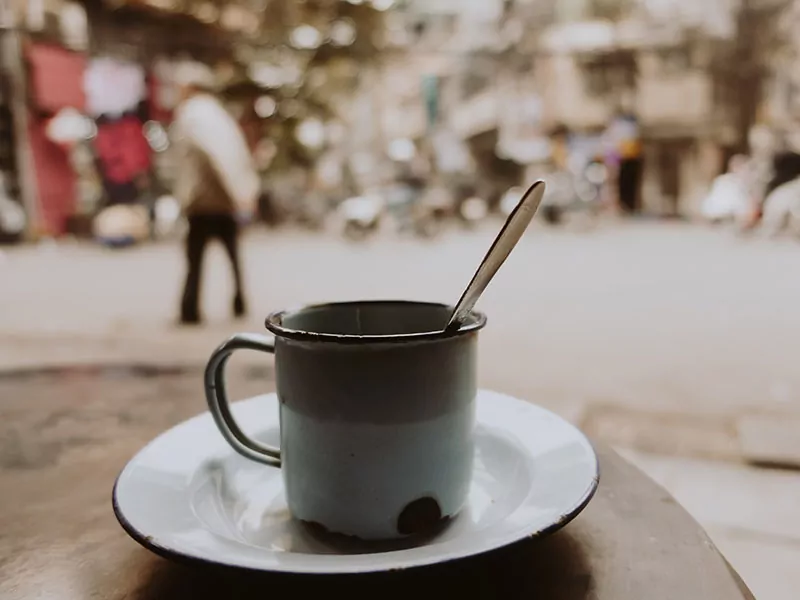
Vietnamese people usually drink coffee in the morning to get a caffeine boost. It is a popular local custom to sit at a roadside cafe or sidewalk stall, have a sip of coffee, and watch traffic rushing by.
Lunch or coffee break is another great time to enjoy this stimulating beverage. People intending to stay up late also borrow extra alertness from coffee, making it a well-loved drink at night as well.
Like in other countries, coffee is an effective drink for bonding activities in Vietnam. Having a friendly chat or a business meeting over a cup of coffee is a common activity to do in this country.
While to-go coffee is gaining popularity, the main way of enjoying coffee in Vietnam is to drink it at a cafe or, more famously, a sidewalk stall. If your Vietnamese friends ask you: “Đi cà phê không?” (“Want to go to a cafe?”), don’t hesitate to say yes!
Vietnamese people like to drink coffee on its own. They often finish eating first before sipping some coffee or vice versa. Nevertheless, it’s not difficult to find cafes selling toothsome Vietnamese snacks and light meals to accompany coffee in Vietnam.
What is it like to drink Vietnamese coffee in a modern setting? Find out here!
Interesting Facts About Vietnamese Coffee
Many people love Vietnamese coffee because of its dark color, full-bodied flavor, and irresistible aroma. Let’s find out what factors give this drink such wonderful traits.
Coffee Beans
Vietnamese people usually brew their coffee from ground coffee, though connoisseurs roast and grind their own coffee. They tend to add a few substances to the coffee during this process, such as butter, whisky, or even nước mắm (Vietnamese fish sauce – a popular condiment in Vietnam.
As mentioned above, the Central Highlands is home to the best coffee in Vietnam. Buôn Ma Thuột, the capital city of Dak Lak Province, is widely considered the “coffee capital” of Vietnam.
Discover the wonderful experience of drinking street roasted coffee in Ho Chi Minh City!
Robusta Coffee
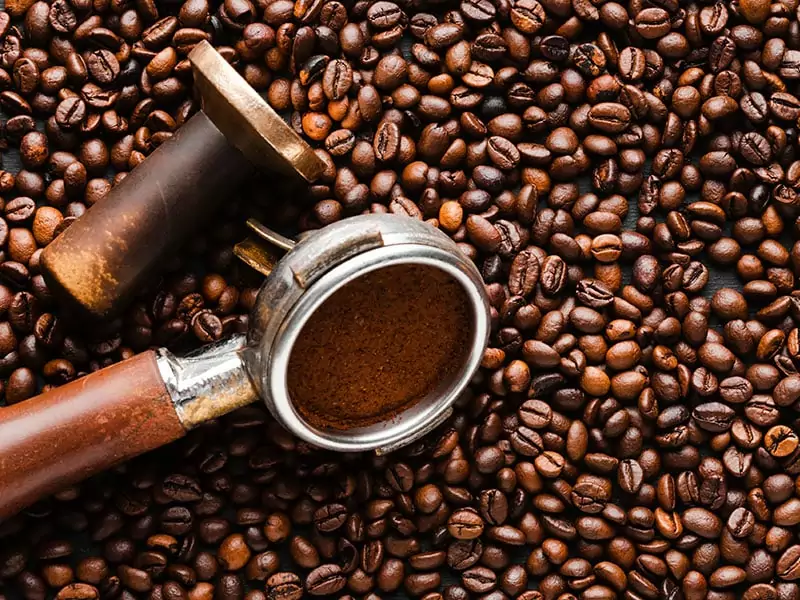
Robusta coffee accounts for more than 90% of coffee production in Vietnam. It has almost twice as much caffeine as arabica beans, so they give Vietnamese coffee a rich yet very bitter flavor.
You can also detect woody hints and a peanut-like aftertaste in it. The low level of acidity is another hallmark of good coffee from Vietnam. Liberian coffee has a similar bitter taste, but it isn’t popular in Vietnam.
Arabica Coffee
While arabica coffee is the main variety in many countries around the world, it has a very modest presence in Vietnam. Đà Lạt (Lâm Đồng Province) is the main Vietnamese place to grow this type of coffee.
There are two main varieties of Vietnamese arabica coffee: Catimor and moka coffee. They offer a smoother and sweeter taste, with less bitterness but more acidity.
Though much less popular, arabica coffee is slowly getting a bigger market share. Besides, it is also a common practice to grind robusta beans with some arabica coffee to create a more subtle-tasting blend.
Coffee Filters
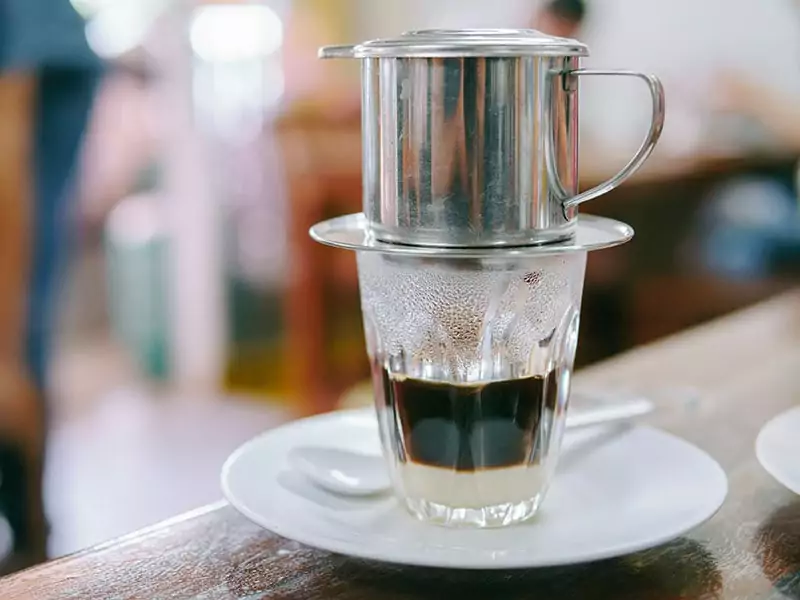
You will need a metal phin cà phê (coffee drip filter) to make authentic Vietnamese coffee. This tool originated in Chennai (India); you may know it as a “Madras coffee filter”. The French brought it to Vietnam at the same time as coffee beans, and locals soon made good use of it.
This brewing tool consists of a lidded chamber/ filter cup, a strainer, and a perforated dish, all of which are made of stainless steel or aluminum.
Though it is time-consuming to make coffee with the tool, the process ensures that all the flavors from the ground coffee will go into your drink. Here is what you should do to prepare coffee with a Vietnamese drip filter.
Step 1: Put Ground Coffee In The Chamber
Put the coffee drip filter on top of a glass or mug. Add enough ground coffee to the chamber, then shake it slightly to layer the grounds evenly. Put on the strainer.
Step 2: Brew The Coffee
Bloom the coffee by pouring a small amount of hot water into the chamber and waiting for thirty seconds. Then, fill the chamber with hot water. Close the lid if desired.
Step 3: Wait For The Coffee To Drip Down
It should take a few minutes for all the coffee to drip through the filter. In case the water goes down too fast, you should adjust the position of the dish or use more finely ground coffee.
It is so easy to brew coffee with a Vietnamese drip filter! You can do it, too!
The Best Types Of Vietnamese Coffee To Savor The Aroma Of Vietnam
I’m sure you know all about the popular Vietnamese street food item iced coffee, but how about more creative choices, such as mixing coffee with yogurt or coconut milk? Do you know what is the priciest type of coffee in Vietnam? Let’s find out now!
1. Cà Phê Đen – Black Coffee/ Drip Coffee
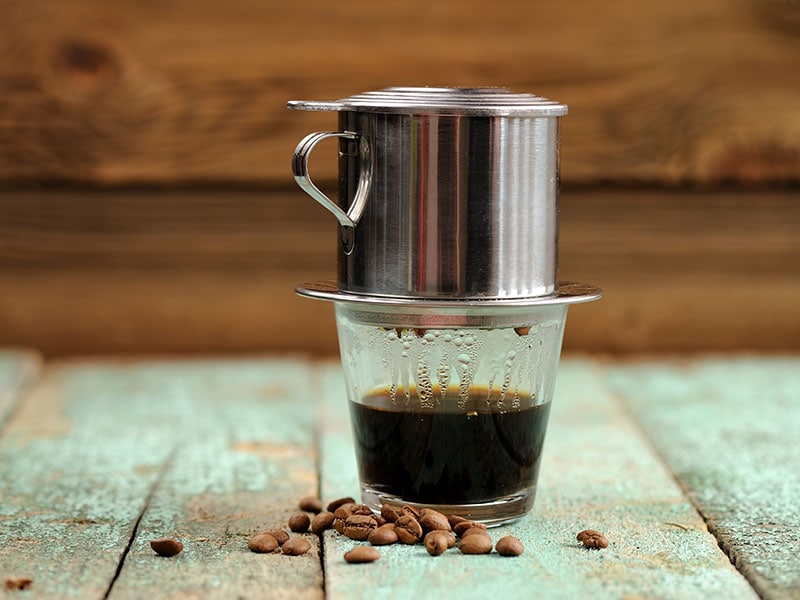
Also known as Cà phê phin (drip coffee), this is Vietnamese coffee at its purest. Since there is no other ingredient in it, you won’t be distracted from savoring its bold mouth feel. The earthy goodness, mixed with the grain-like flavor and whisky undertones, is a thing to remember.
Starbucks and most Western coffee shops sell arabica coffee, which boasts a smooth and sweet taste with fruity aromas. Therefore, prepare yourself for the powerful sensation of Vietnamese coffee! You won’t forget its pronounced bitterness anytime soon!
This flavor profile is even obvious in Northern Vietnam, where locals prefer strong, black coffee. Some places may offer roasts so robust that caffeine intoxication is a real risk for anyone drinking them too much.
By contrast, not many Southern Vietnamese people like pure, undiluted coffee. Most people like to mix black coffee with ice and/ or condensed milk. That is the inspiration for the world-renowned iced coffee with condensed milk.
2. Cà Phê Chồn – Weasel Coffee
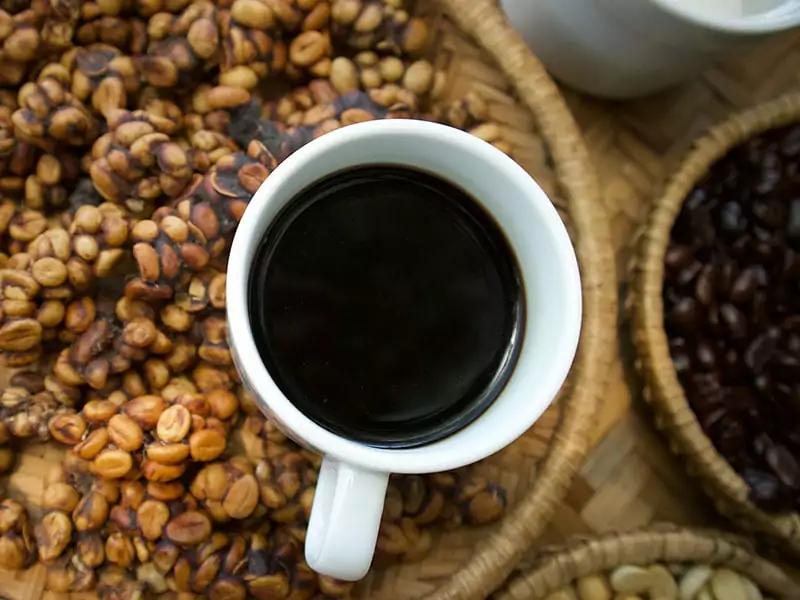
A better translation for “Cà phê chồn” should be civet coffee because its main ingredient is the leftover coffee beans in the feces of Asian palm civets. Still, “weasel coffee” is the more popular name for the Vietnamese version.
Asian palm civets like to pick and eat the highest-quality coffee cherries. The fleshy part is fully digested, but the beans aren’t. Instead, they undergo an organic fermentation process in the animal’s intestines, which greatly improves their quality.
The next step is to roast and grind the coffee beans as usual. Many people describe the taste of the resulting product as exotic, full of musky scent, and a deep level of earthiness reminiscent of tropical jungles.
Also known as kopi luwak, weasel coffee has a bad reputation as it is usually derived from caged and abused Asian palm civets. In the Central Highlands (Vietnam), however, the mammals are let to roam free in pesticide-free coffee plantations and chew on coffee cherries of their choice.
That guarantees both a better life for Asian palm civets and more delicious weasel coffee. But the supply is always limited: an adult palm civet can’t excrete more than 10 grams of coffee beans per day. As a result, weasel coffee is an extremely exorbitant delicacy in Vietnam.
Satisfy your curiosity for weasel coffee by taking a trip to Đà Lạt, Lâm Đồng Province!
3. Cà Phê Sữa Đá – Vietnamese Iced Coffee With Condensed Milk
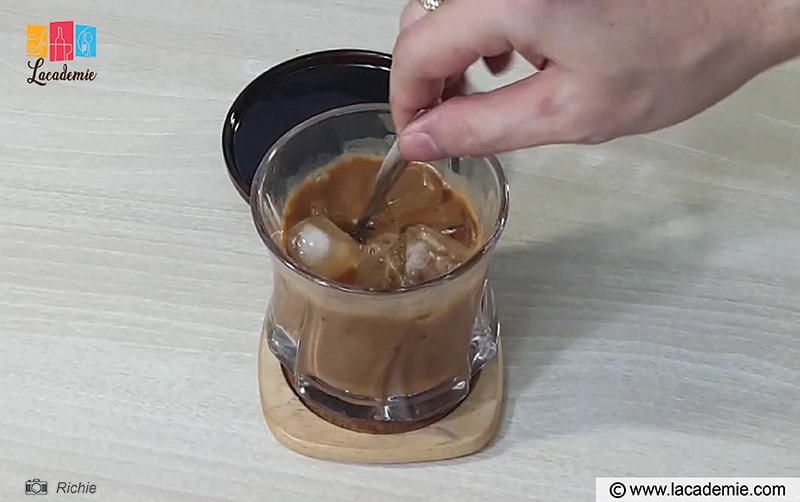
What makes this must-try Vietnamese drink so famous? Is it the cooling property or the flawless blend between the sweetness of condensed milk and the rich robusta-derived bitterness? You should enjoy it to find your own answer!
When coffee first became popular in Vietnam, locals could have chosen sugar, syrup, or molasses for sweeteners. But they went for condensed milk instead. The result is a wonderful drink whose popularity endures to this day and even spreads to the rest of the world.
Making this drink is a no-brainer. You just need to coat the glass with your desired amount of condensed milk (use more milk for a sweeter drink), then put the coffee drip filter on and brew as usual. Finally, mix the two parts vigorously, add ice, and your delicious coffee is ready to serve!
Though you can make this drink from instant coffee products, they come with a fixed milk-to-coffee ratio, so they may not fit your taste well. In the Northern region, iced coffee may go by the name Cà phê nâu đá (literally “iced brown coffee).
4. Bạc Xỉu / Bạc Sỉu – Vietnamese White Coffee
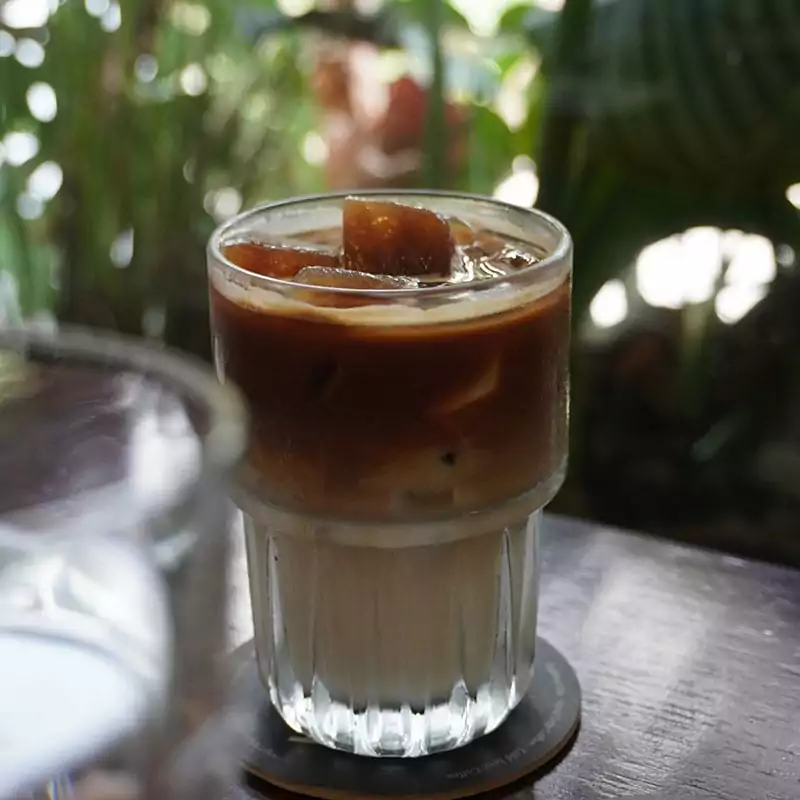
Remember what I said about Southern Vietnamese preferences for sweet coffee? Bạc xỉu is a perfect example of that tendency. It is a local variation of iced coffee that consists of more milk than coffee. Some people refer to it as Vietnamese white coffee.
Hoa (a term for Vietnamese people of Chinese descent) coffee vendors created this drink somewhere in the 1950s – 1960s. Back then, full-bodied black coffee was considered an unsuitable drink for women and, of course, children.
Therefore, Bạc xỉu was created as a well-watered coffee drink to help them experience the seductive flavors of coffee without getting caffeine overload. The invention proved to be a favorite drink for both Hoa and non-Hoa people.
5. Cà Phê Trứng – Egg Coffee
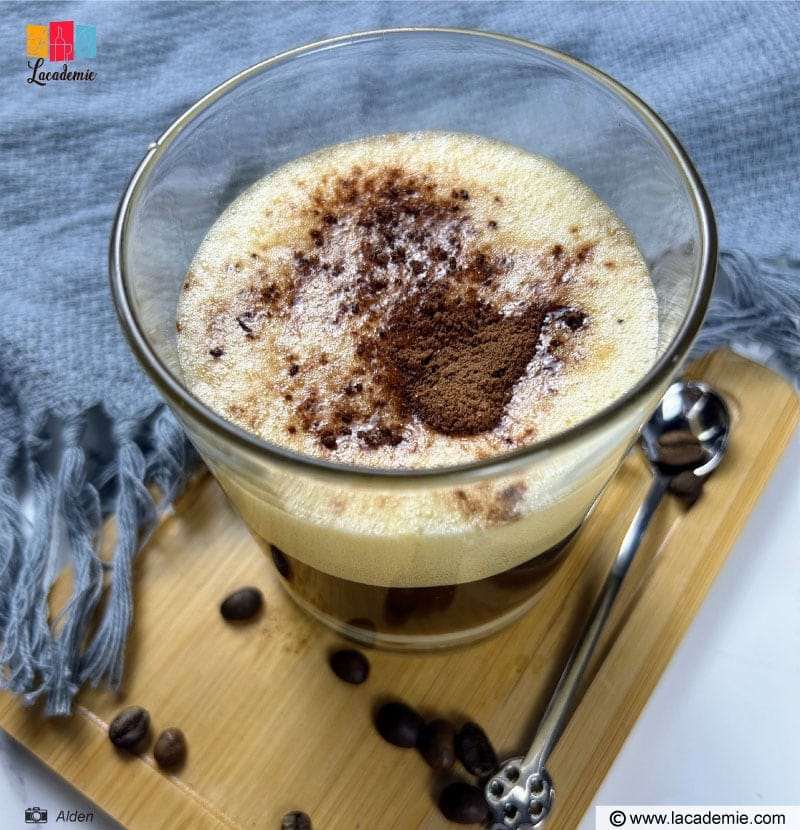
The origin story of this exotic Vietnamese coffee takes place in wartime Hanoi around the 1940s. It happens in the Sofitel Legend Metropole Hotel, a luxury hotel catering to the rich, but the main character is a humble Vietnamese bartender named Nguyễn Văn Giảng.
Due to the shortage of fresh milk, he had to improvise drinks with available ingredients. His most famous idea was to blend fresh egg yolks, condensed milk, and black coffee together into a foamy, creamy delight.
With positive feedback from the patron, he went on to open his own cafe, which is now still a famous destination for coffee lovers in Hanoi. Its signature menu item is always a cup of tasty egg coffee that looks and tastes like cappuccino with the added bonus of eggs.
Mr. Giảng’s exact recipe is a well-kept secret, but the basic idea of mixing egg yolks and coffee quickly found its way to other coffee brewers. Therefore, you can visit many other places to experience premier egg coffee.
From a predominantly Northern Vietnamese delicacy, this type of exotic Vietnamese coffee can now be enjoyed in many places. It was one of the drinks served during the 2019 North Korea–United States Hanoi Summit and caught the imagination of the world.
Bánh mì and egg coffee is a great Vietnamese combo to try!
6. Cà Phê Cốt Dừa – Coconut Coffee
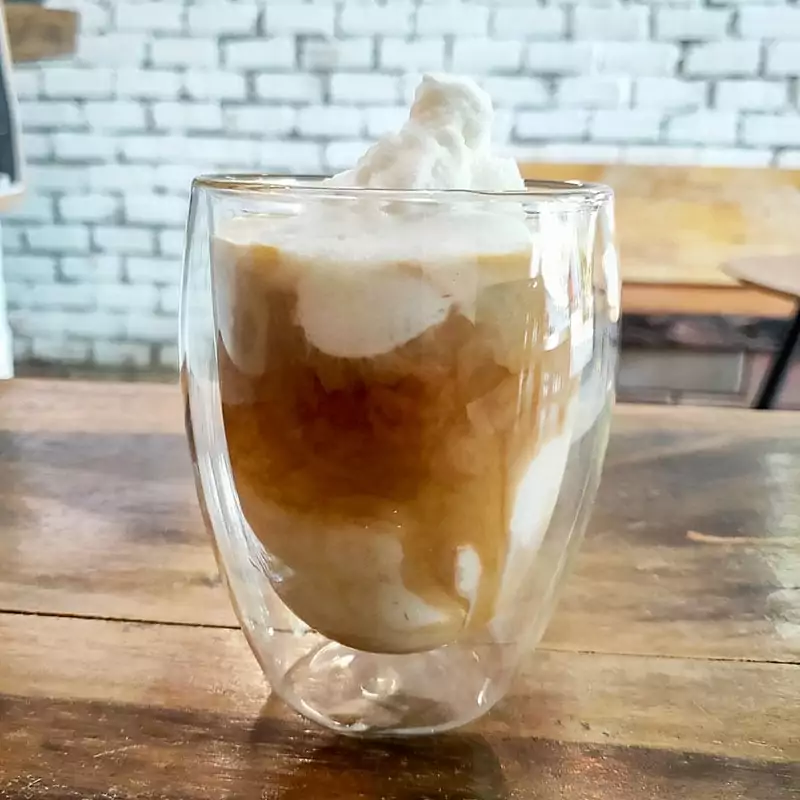
When coconut coffee first appeared in Hai Phong, a coastal city in Northern Vietnam, most people thought it was only a passing fad. It wasn’t. The new drink soon conquered Hanoi and established a dedicated fanbase in the Northern region.
And now, it is making inroads into South Vietnamese cuisine. There are already plenty of cafes and stalls offering this refreshing drink in Ho Chi Minh City and other big cities. It is often available as a combo of coffee, coconut milk, and ice, but you can also add tapioca pearls and other toppings.
After all, who can resist its mellow sweetness improved with the toothsome aroma and subtle sweetness of coffee? The lack of condensed milk also means it is suitable for people with special preferences, like vegan and keto diets.
7. Sữa Chua Cà Phê – Yogurt Coffee
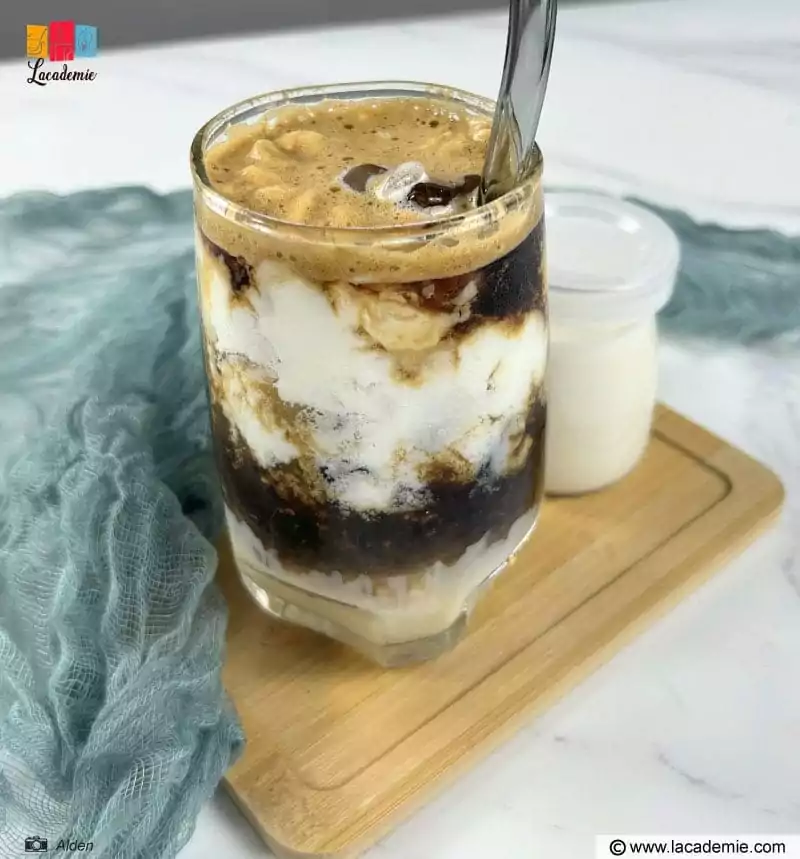
Yogurt coffee is a mysterious Vietnamese drink that nobody can say for sure when or how it came about. The only certain thing is that it first appeared in Northern Vietnam and gained massive fame before moving southward.
Perhaps it had the same beginning as egg coffee: the brainchild of an ingenious coffee brewer whose idea was soon copied by rivals. This toothsome drink is full of contrasting flavors that surprisingly complement each other to great effect.
Yogurt coffee is all about drizzling a small amount of coffee over an ice slushy of condensed milk and yogurt. That’s right: coffee only plays a supporting role in this inventive Vietnamese recipe, but its rich bitterness is key to overall success. In addition, it interacts with yogurt very nicely.
The refreshing tang of yogurt offsets what Vietnamese lacks in acidity. Meanwhile, since robusta coffee makes a lot of crema (the brownish, creamy puff on top), your drink will have a striking appearance.
You will be surprised by how easy it is to make yogurt coffee the Vietnamese way!
8. Sinh Tố Cà Phê – Coffee Smoothie
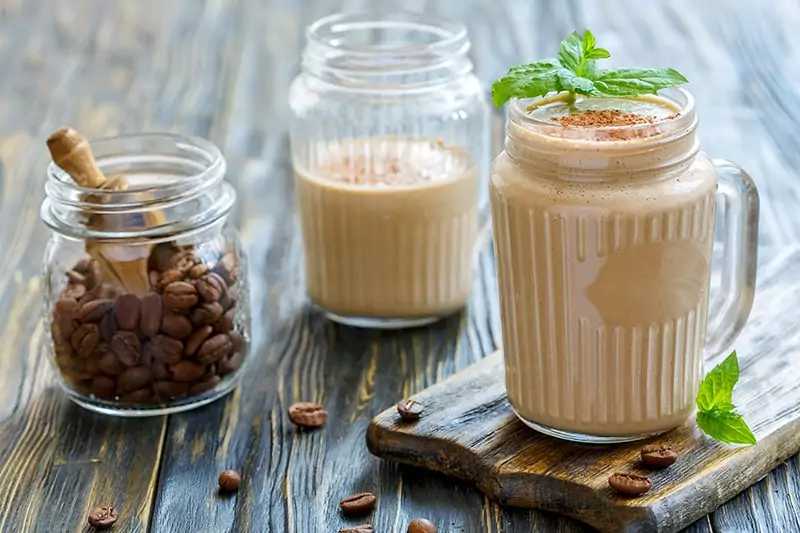
People who are interested in healthy breakfast recipes will know about coffee smoothies. While frozen bananas, milk, and peanut butter are the main ingredients for this coffee-based delight in the West, the Vietnamese version can be made with other types of fruits.
Popular options include mangos, avocados, and sapodillas. To make the smoothie truly Vietnamese, condensed milk is a must-have. Simply blend everything with freshly brewed Vietnamese black coffee, and you will have a treat to make your mouth water.
What Are The Best Places To Drink Coffee In Vietnam?
Many Vietnamese people have their favorite cafe haunts. If you want to experience coffee culture in Vietnam, these destinations deserve a visit.
Cafe Giảng
Located in the Old Quarters, Cafe Giảng is a humble, no-frills restaurant with a modest size. But behind that simple appearance is a rich history: this place was opened by the creator of the famous egg coffee. That drink is, of course, the signature menu item.
- Address: 39 P. Nguyễn Hữu Huân, Lý Thái Tổ, Hoàn Kiếm, Hà Nội, Vietnam
- Time: 7 AM – 10:30 PM daily
- Website: https://cafegiang.vn/
- Phone: +84989892298
Cà Phê Cô Hằng
Many people consider this place the birthplace of coconut coffee. If you want to experience the authentic flavor of that tasty drink, going to this cafe will be a smart choice. Each serving comes with plenty of toppings, and there are plenty of delicious snacks to accompany your drink, too.
- Address: 124a Lam Sơn, Lê Chân, Hải Phòng, Vietnam
- Time: 8 AM – 9 PM daily
- Website: https://www.caphecotdua.com/
- Phone: +84982722535
Cộng Cà Phê
If you love to sip your coffee in a vintage-themed room, this massive cafe chain will fit the bill nicely. Its coffee shops are all decorated with items and memorabilia from Northern Vietnam in the pre-1986 era. If you want to experience old Vietnam, it will be a great choice to come here.
Though known for introducing excellent Northern coffee drinks to other regions, Cộng Cà Phê also serves delicious beverages from Southern Vietnam as well as Western countries.
Phúc Long Coffee & Tea
If you are in Ho Chi Minh City and want to try Southern Vietnamese coffee varieties with the best quality, keep this famous cafe chain in mind. You can also find its location in Da Nang, Can Tho, and other cities in the region. People come here for simple yet flavorful beverages, especially coffee.
The Coffee House
Though a relatively young business (compared to other local coffeehouse chains), The Coffee House has made a name for itself thanks to its farm-to-table approach. You will enjoy sipping fresh, organic coffee in its elegantly decorated shops full of natural light.
Trung Nguyên Legend Cafe
Besides producing excellent coffee products, Trung Nguyên Legend is also behind a very successful chain of coffee shops spread throughout Vietnam. You can find all the best qualities of Vietnamese coffee in its fragrant, full-flavored drinks.
Highlands Coffee
Highlands Coffee is both an important coffee producer and a massive cafe chain with shops in Vietnam’s big cities. It serves handmade (and a little expensive) coffee drinks in a luxury setting. In addition, you can order from a large menu of fast food as well.
Do You Want To Try The Most Famous Vietnamese Coffee Brands?
You will be spoiled for choices when it comes to picking the best coffee brands in Vietnam. They offer both ground coffee and instant products, so you can always choose something suitable for your needs.
Trung Nguyên Legend
Ground coffee products from Trung Nguyên Legend boast charming aromas and diverse flavors thanks to being mixed from four coffee bean varieties: robusta, arabica, Excelsa, and Catimor.
You can try Trung Nguyen Vietnamese Coffee – 15 Oz Can or Trung Nguyen – G7 3 In 1 Instant Coffee to discover how wonderful the result can be. This Vietnamese brand is also one of the few brands to offer humanely produced weasel coffee.
Highlands Coffee
Highlands Coffee means first-rated products that are made from the best ingredients through a meticulous process. If you love a full-bodied cup of coffee filled with strong aromas, you will never go wrong going for this coffee brand.
It also offers canned coffee for busy bees. For example, the Highlands Coffee Vietnamese Coffee with Condensed Milk – 7.9 oz Can is an innovative take on the classic Vietnamese drink. To try the traditional taste, you can enjoy Highlands Ground Coffee Beans – Moka.
Vinacafé
In Vietnam, Vinacafé is synonymous with the best instant coffee products. Anyone who wants to savor iced coffee or Bạc xỉu without troubling themselves with all the brewing and cooking usually opt for this Vietnamese brand.
How about ordering the convenient Vinacafe 3 in 1 Instant Coffee Mix? Its rich and sweet coffee is as good as brewed!
Nescafe
In a country filled with well-known local coffee brands like Vietnam, it is no small feat for a foreign name to become popular. But this Swiss brand rises to the occasion admirably.
Many Vietnamese people always turn to its instant coffee products to make their morning coffee, like this Nescafe Cafe Viet Milky Iced Coffee 14 Packets/ 9.87oz.
Vietnamese Coffee: A Tapestry Of Tastes
Some people liken the appeal of Vietnamese coffee to religious fervor. That might be a little dramatic, but once you’ve discovered the full depth of its flavors, it’s hard to say otherwise. Have a taste of deeply robust Vietnamese coffee, and you will be a true believer in its deliciousness.
Still, you may find authentic Vietnamese coffee mind-boggling on the first try, so go slow. Feel free to share your experience and journey in the comment section. Your friends are probably very interested in this Vietnamese drink, so don’t forget to share this post with them!


Jamie Scott
Editor in Chief, Senior Content Writer
Expertise
Home Cooking, Meal Planning, Recipe Development, Baking and Pastry, Food Editor, Cooking-video Maker, Western Food Evaluation Expert
Education
Le Cordon Bleu College of Culinary Arts
Local Community College, New York, NY
Jamie Scott is a skilled culinary expert and content creator specializing in Western cuisine. With over 15 years in the culinary field and formal training from Le Cordon Bleu, Paris, Jamie deeply understands how to blend nutrition with delicious flavors. His passion for cooking matches his commitment to making healthy eating accessible and enjoyable.
On Fifteen.net, Jamie brings a fresh perspective to classic dishes and beverages, offering readers insightful recipes, cooking tips, and a fresh view on meal planning that emphasizes taste, health, and simplicity.